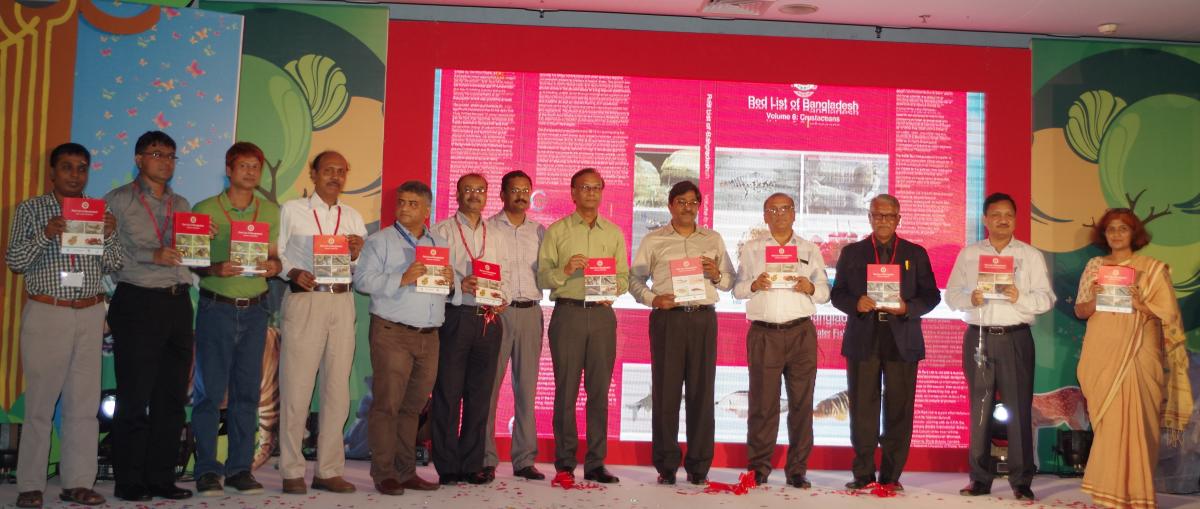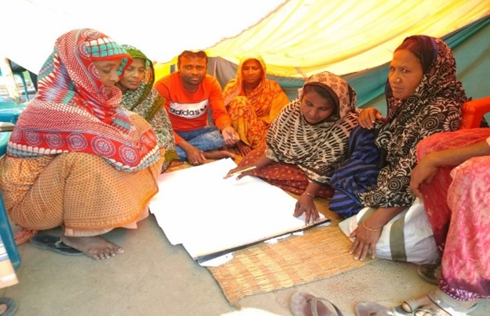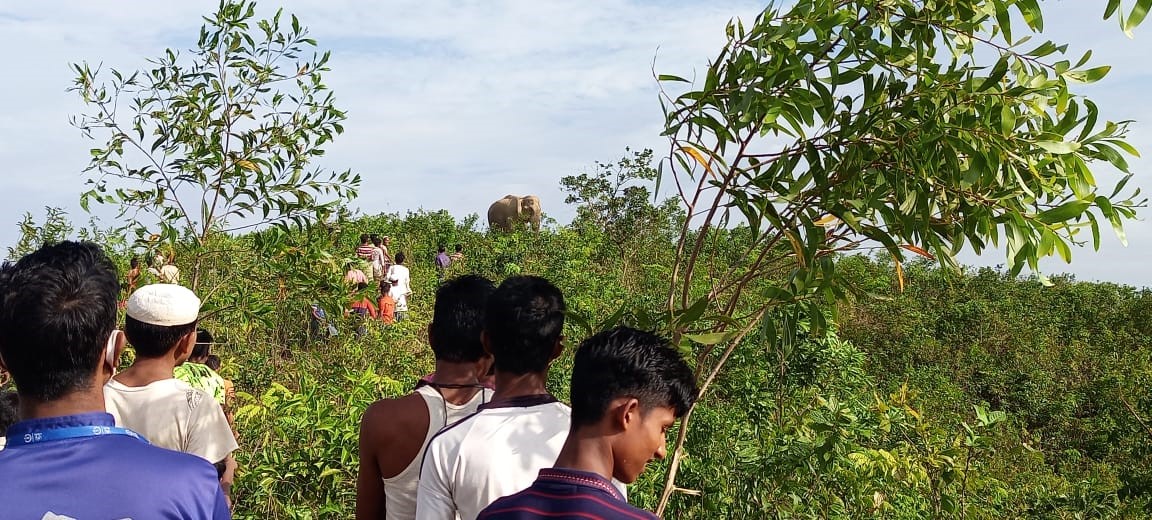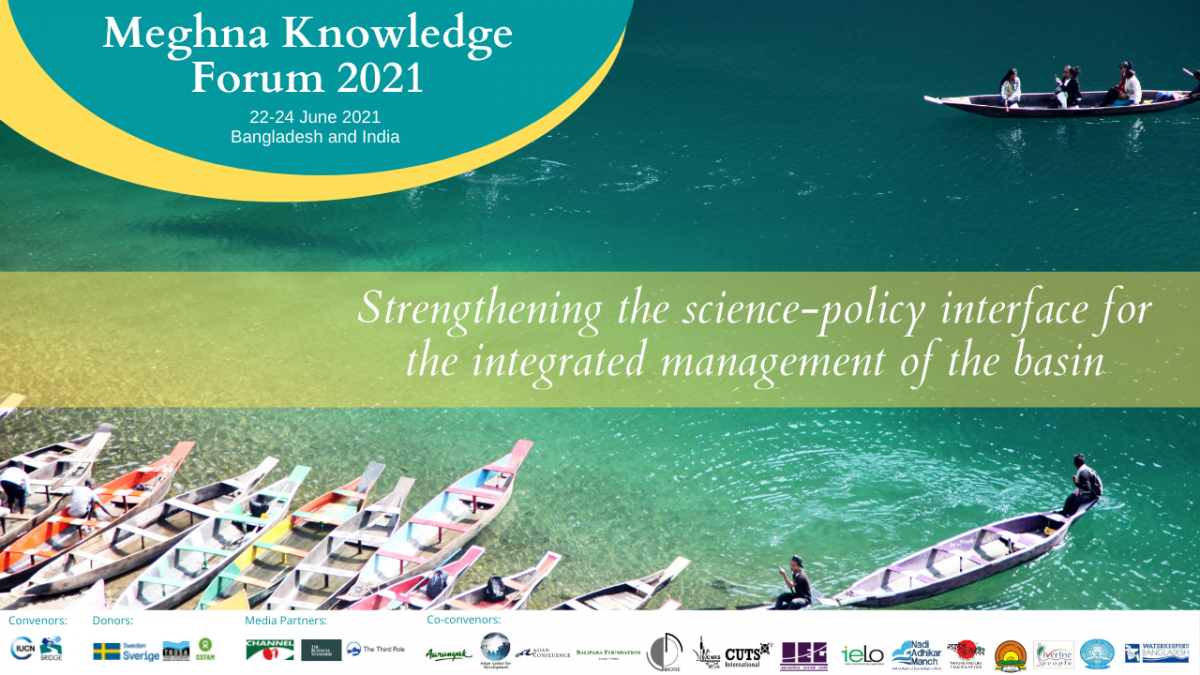Bangladesh: Red List reports 31 Regionally Extinct and 390 Threatened animal species
In 2000, IUCN Bangladesh first published the IUCN Red List of Threatened Species™ Bangladesh. Fifteen years later, the list has been updated including two invertebrate groups: crustaceans and butterflies. A total of 1,619 animal species belonging to seven groups – mammals (138), birds (566), reptiles (167), amphibians (49), freshwater fish (253), crustaceans (141), and butterflies (305) – have been assessed over the last 30 months. The updated Red List has recently been unveiled at an event in Dhaka, Bangladesh.

Launching of 'IUCN Red List of Bangladesh 2015', Dhaka, Bangladesh
Photo: IUCN
During the assessment process, 160 assessors in Bangladesh assessed 1,619 species and categorised 390 threatened species: 56 are Critically Endangered (CR), 181 are Endangered (EN), 153 are Vulnerable (VU) and sadly, 31 species have been classified as Regionally Extinct (RE). The assessment also listed 278 species as ‘Data Deficient’, which indicates an inadequacy of available information to make a direct, or indirect, assessment on these species.The Red List of Bangladesh 2015 illustrates that a large number of species have recently undergone rapid decline.
This comprehensive process also highlights the importance of addressing dominant threats to wildlife such as overexploitation and habitat degradation, and also helps to identify where future research is most needed. In seven volumes, the detailed information with geographical distribution, photo and the present status of the each species of the country have been included, following the latest Global Red List Guidelines. These volumes highlight the threatened and Data Deficient species because these require more research and conservation efforts to protect their natural habitats. More than 200 learned, motivated and well-trained assessors, photographers, and surveyors worked actively to accomplish the assessment process.
The Red List of Bangladesh 2015 is seen as a significant milestone in the conservation history of the country. It is hoped that this work will be a catalyst for building awareness and creating consensus for increased conservation efforts.
The book unveiling ceremony was held on 22 June, 2016, in Dhaka. Abdullah Al Islam Jakob, MP, Honourable Deputy Minister to the Ministry of Environment and Forests (MoEF); Dr. Kamal Uddin Ahmed, Secretary of the MoEF; and Md. Yunus Ali, Chief Conservator of Forests of the Bangladesh Forest Department were present at the ceremony.
Ishtiaq Uddin Ahmad, Country Representative of IUCN Bangladesh and Dr. Mohammad Ali Reza Khan, Chief National Technical Expert of the Updating Species Red List of Bangladesh Project, were also present at that event, along with all the lead assessors, assessors, photographers, young professionals, scientists, and researchers. The event created a massive media buzz, including on social media, focusing on the urgent need to conserve the threatened species of Bangladesh.
The Red List of Bangladesh 2015 has been prepared under the ‘Updating Species Red List of Bangladesh’, itself a sub-project under the ‘Strengthening Regional Cooperation for Wildlife Protection (SRCWP)’ of the Bangladesh Forest Department, and is funded by The World Bank. During the 2.5-year assessment process, members of the IUCN Global Species Programme, the IUCN Species Survival Commission, IUCN Bangladesh, Bangladesh Forest Department, teachers and scientists from several renowned universities, research institutes, and other governmental and non-governmental agencies worked together closely to ensure that the most accurate analysis was undertaken in order to categorise the species.
The updated Red List is expected to create a revitalised momentum in biodiversity conservation in Bangladesh, with increased urgency to further conduct ecosystems, plants, insects, marine fish and crustaceans Red Listing in order to identify their present status in Bangladesh. The Government of Bangladesh further expresses it is committed to taking all necessary steps towards better managing the wildlife and biodiversity of the country.
Further information of the project: https://www.iucn.org/asia/bangladesh/countries/bangladesh/updating-species-red-list
IUCN Red List of Bangladesh website: http://www.iucnredlistbd.org/



